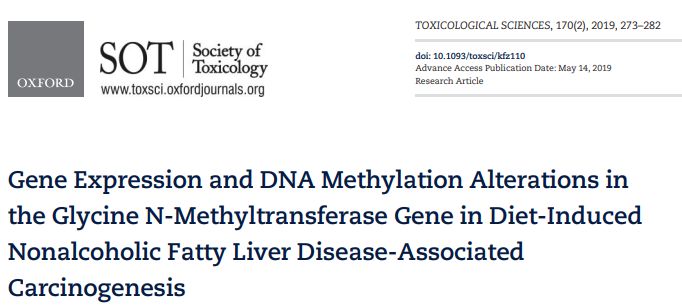Update on the clinical relevance of STAM model
One of our clients FDA-National Center for Toxicological Research (NCTR) has published the results of a study using STAMTM model in Toxicological Sciences.
Title: “Gene Expression and DNA Methylation Alterations in the Glycine N-Methyltransferase Gene in Diet-Induced Nonalcoholic Fatty Liver Disease-Associated Carcinogenesis”

Utilizing two NAFLD-HCC models (STAMTM and Diamond), this paper reports that Gnmt gene expression decreases over time, correlating with an increase in DNA methylation level.
This decrease in Gnmt gene expression is also seen in human HCC patients. These gene expression and epigenetic modification changes may be used as biomarkers for early diagnosis of disease.
In a previous paper, transcriptome comparisons have reported that the liver cancer that occurs in the STAMTM model is the most similar to human liver cancer (Dow et al., 2018).
The relationship between gene expression and epigenetic regulation in the NASH-HCC process has also recently been reported using the STAMTM model (Dreval et al., 2019), so we believe it is an appropriate model for gene expression and epigenetic research.
